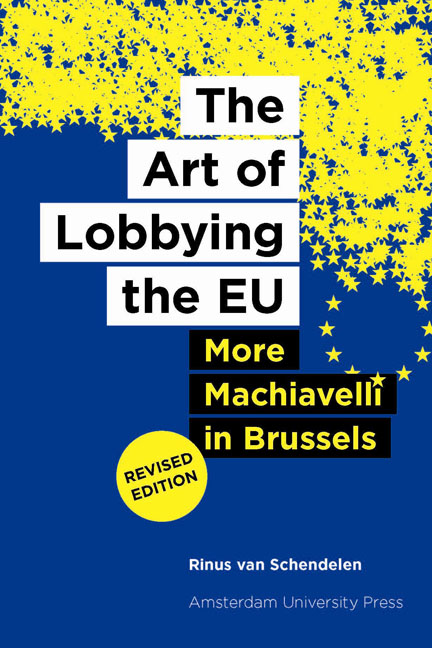Book contents
- Frontmatter
- Dedication
- Contents
- Detailed Contents
- Special Preface to the Fourth Edition: Ten Years’ Anniversary of this Book
- List of Figures
- List of Best Websites
- List of Abbreviations
- 1 The Europeanization of Public Affairs
- 2 The Playing-Field: EU Common Decision-Making
- 3 Pushing the Buttons of ‘Brussels’
- 4 Getting Grip on an EU Arena
- 5 Managing the Home Front
- 6 Managing the EU Fieldwork
- 7 The Limits of EU Public Affairs Management
- 8 Public Affairs, Lobbying and EU Democracy
- References
- Index
2 - The Playing-Field: EU Common Decision-Making
Published online by Cambridge University Press: 10 December 2020
- Frontmatter
- Dedication
- Contents
- Detailed Contents
- Special Preface to the Fourth Edition: Ten Years’ Anniversary of this Book
- List of Figures
- List of Best Websites
- List of Abbreviations
- 1 The Europeanization of Public Affairs
- 2 The Playing-Field: EU Common Decision-Making
- 3 Pushing the Buttons of ‘Brussels’
- 4 Getting Grip on an EU Arena
- 5 Managing the Home Front
- 6 Managing the EU Fieldwork
- 7 The Limits of EU Public Affairs Management
- 8 Public Affairs, Lobbying and EU Democracy
- References
- Index
Summary
In order to gain influence in a Principality, the skill of gaining familiarity with its court, dignitaries and officials is crucial. This old wisdom of Machiavelli (Prince, chapter 7) is also true for the EU, where nobody can score without intimate knowledge and information about how decisions are made. Like in the old courts, its internal ‘flesh-and-blood’ can be much different from its formal ‘skeleton’. How does the EU work?
I Deus Ex Machina
The basic principle of EU integration is that every EU decision that is based on competences and procedures agreed upon by treaty text, legally binds the member states and overrules the domestic laws and acts that are not in accordance with it. The principle works, however, in a more complex way because, due to the various treaties and their differentiations, more than one legal EU order exists [Avbelj, 2011], each with a division of competences between EU and member states. Potential conflicts between them are solved by the Court and ultimately by modifying a treaty. The principle is most crucial for EU integration, as the about 2,500 new decisions produced annually would otherwise remain just on paper. As main place of production, Brussels can hence be called the capital of the member states. The interest groups wanting to influence the outputs of the EU machinery must possess useful (valid, reliable and applicable) knowledge of how they come into being [Lindblom and Cohen, 1979]. Otherwise an interest group cannot effectively influence the authorities and officials inside. This chapter is a crash course on the workings of the EU machinery. What sort of machinery is the EU? Three basic characteristics we emphasize.
– Not an ordinary system. Uninformed newcomers from inside or outside EU often take it as a system like their national capital or an international organization. That is a mistake. Functionally the EU is different from both, so it could be called a system sui generis, without parallel [Almond and Powell, 1966], a sort of ‘non-state statehood’ [Neyer and Wiener, 2011]. Its main function is to make common decisions that bind the member states somehow. Therefore, it articulates and aggregates the interests of all sorts of interest groups, including governments.
- Type
- Chapter
- Information
- The Art of Lobbying the EUMore Machiavelli in Brussels (Revised Edition), pp. 71 - 118Publisher: Amsterdam University PressPrint publication year: 2013



